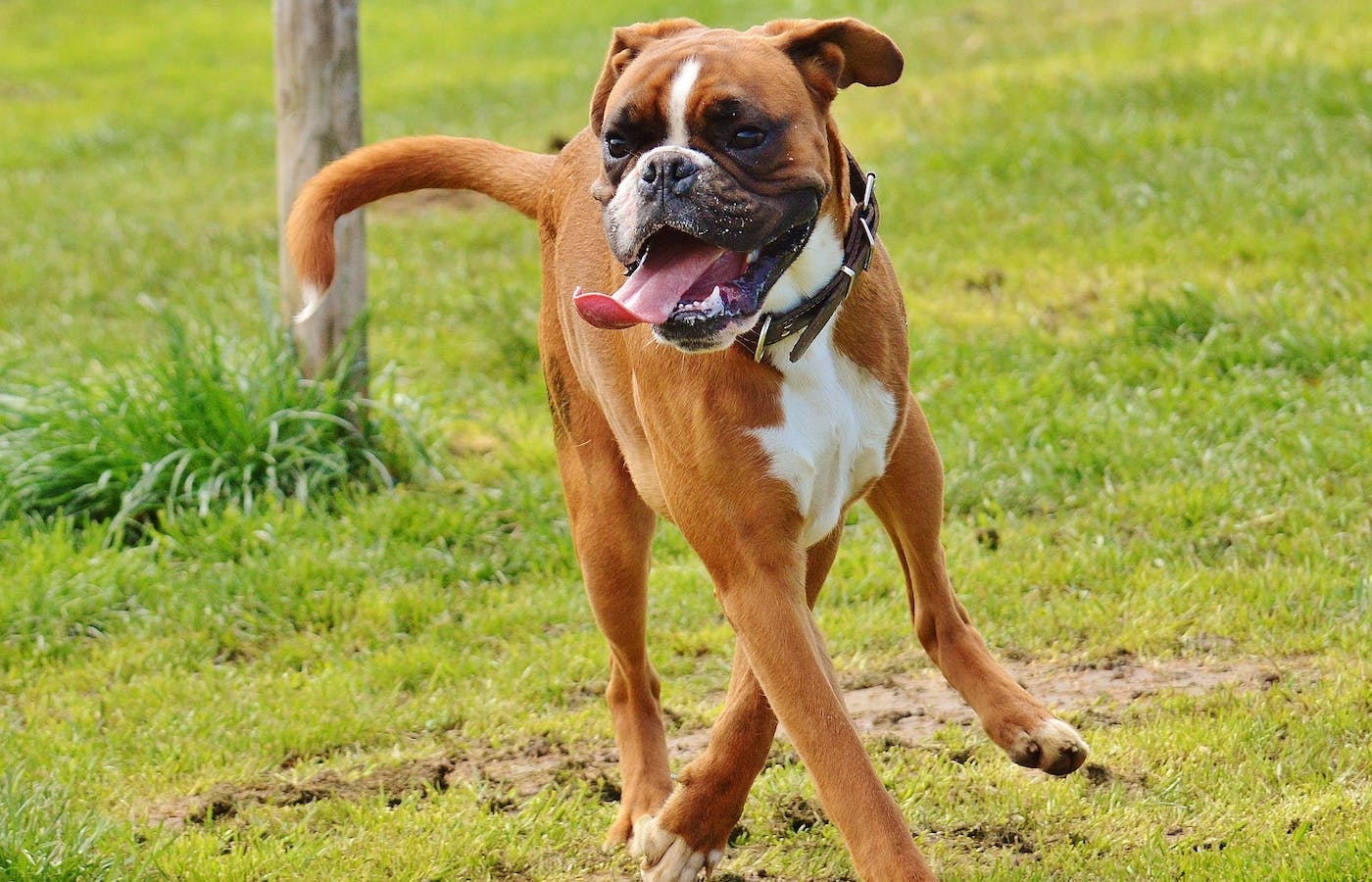Why Do My Dog’s Joints Click?
We all creek and click sometimes, especially as we get older so it’s not that unusual when we hear our dogs joints doing the same. But do we need to worry?
Sometimes, a clicky joint is an early sign of Arthritis. But that’s not always the case – keep reading to learn more about the sound you’ve heard from your dog’s limbs.
Is it a Click or a Pop?
There’s a subtle difference in the sound. Try to determine when and where the noise is occurring. Here’s a summary of possible causes:
- Joints sometimes just pop, like human knuckles and knees. If it’s caused by air shifting inside the joint as it stretches or recovers, the sound is more pop-like.
- Arthritis is caused by ligament loss or damage – and this can create a creaking sound when your dog moves around.
- Hip dysplasia means the hip joint is popping out of place. Humans get this too and it’s a condition that can develop at any age. So if you suspect that the sound is coming from your dog’s hip, get them to the vet for an x-ray.
- Puppy joints are loose and growing. Because they’re not fully joined-up yet, puppy joints can pop occasionally – caused by air or loose ligaments – and it isn’t always cause for concern.
- Ligaments or bone rubbing against bone – Joints are supposed to be cushioned so the two bones don’t touch. If the bone is rubbing something at the joint, this can eventually cause problems. When ligaments are worn down and bone rubs against bone, it becomes painful. So if you hear frequent sounds when your dog stretches or moves, check with your vet.
Does Your Dog Have Arthritis?
Sadly, Arthritis is common among dogs/learn/dog-health/caring-for-dogs-with-arthritis, especially in certain breeds. Labradors, Golden Retrievers, Spaniels, and German Shepherds – some of our absolute favorites – are all susceptible to joint pain. Arthritis can develop at any age, especially if your dog is injured.
Here are some of the typical symptoms of Arthritis:
- Aches and stiffness. You’ll notice that your dog’s body language is changing. They may be stiff after a walk, even if they’re still full of energy when they go out. They might move more or less often while they’re sleeping, struggling to find a comfortable position.
- Licking or chewing at joints. Dogs can’t tell us about pain so they might self-soothe by chewing on their aching legs, and you’ll sometimes notice matted fur or wet patches.
- Reluctance to walk. Once your dog realizes that exercise causes pain, they will become a little slower and may be reluctant to set off on a walk. (They’ll probably still be persuaded, in our experience!) Gentle walks are generally advised.
- Limp or decreased confidence. If they don’t limp, your dog might choose ways to take the pressure off their joints: avoiding stairs and jumps (into the car or onto the couch).
- Swollen joints. In some dogs, you can feel the swelling around their joints.
- Becoming tired, gloomy or overweight. The pain caused by Arthritis can produce side-effects if your dog can’t sleep or exercise very well.
If your dog’s diagnosed with chronic Arthritis, don’t despair. The vet can prescribe relief such as painkillers and anti-inflammatories. In severe cases, they may discuss surgical options. They can also help you to determine how best to exercise your dog.
Looking for more answers? There are some complementary therapies that you can try to help your dog restore their vigor.
- Hydrotherapy/learn/dog-health/hydrotherapy-for-dogs-everything-you-need-to-know. It’s a low-impact form of exercise which is often recommended to humans who have joint pain. Water removes pressure from the joints and allows fluid movement, so it’s great for stiff dogs who need to keep moving.
- Acupuncture. An option worth exploring? This ancient form of therapy is now available to dogs! The tiny needles stimulate the flow of blood and encourage the release of endorphins to reduce pain.
- Laser Therapy. Administered by some vets, this involves the painless use of a light beam which, when delivered at a particular wavelength, can stimulate joints or injuries to heal.
- McTimoney/learn/dog-health/what-is-mctimoney-for-dogs. This is a type of chiropractic manipulation for treating musculoskeletal conditions and is very gentle.
Protecting Your Dog’s Joints
How soon should you start thinking about Arthritis? If you have a dog who is genetically predisposed, it’s never too soon. Here’s where we shamelessly plug our fabulous all-in-one canine supplement!
We designed The One/products/the-one for people who want to give their dogs the best of everything. When you want to support their joints, their hearts, and their brains, our doggy-delicious supplement is the obvious choice!
For joints, we’ve added prized Glucosamine/learn/dog-supplements/glucosamine-for-dogs, Chondroitin/learn/dog-supplements/the-benefits-of-chondroitin-for-dogs and L-Carnitine/learn/dog-supplements/the-benefits-of-l-carnitine-for-dogs; all clinically proven to support supple and smooth-moving joints. It’s perfect for busy young dogs as well as older dogs who are slowing down; in younger dogs, it helps to cushion their joints against injury or overuse, and for older dogs it can restore movement (according to some of our many glowing reviews!). Whatever stage your dog’s at, we think The One is worth a try.
